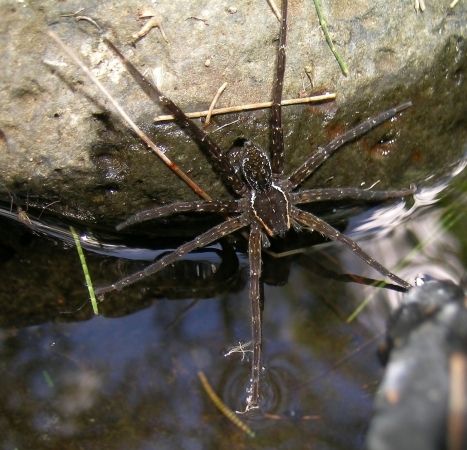|
|
ArachnidaThe class Arachnida is made up of spiders, scorpions, ticks, mites, solifuges and harvestmen[2]. While most arachnid species are terrestrial, some are wetland dependent, or even inhabit marine and freshwater environments.
Quick facts
DescriptionArachnids have eight legs and fused body segments. This phylum includes spiders and mites. Spiders have two main segments, a cephalothorax and an abdomen. They are predatory animals which are mobile hunters or web-spinners. Some spiders live in wetland habitats, hunting by the waters edge or surface. Mites have a single fused body segment. They can be free-moving, but many species live as parasites on plants and animals. Aquatic mites, although a major component in benthic and hyporheic communities, can often be overlooked or left unidentified due to their small size. Additional informationAustralian freshwater invertebrates References
Last updated: 12 April 2017 This page should be cited as: Department of Environment, Science and Innovation, Queensland (2017) Arachnida, WetlandInfo website, accessed 18 March 2024. Available at: https://wetlandinfo.des.qld.gov.au/wetlands/ecology/components/biota/fauna/fauna-taxon/invertebrates/arthropoda/arachnida.html |

 — Department of Environment, Science and Innovation
— Department of Environment, Science and Innovation


